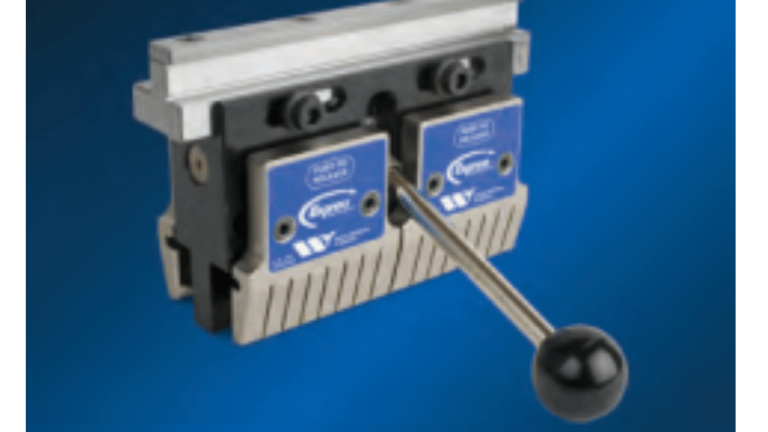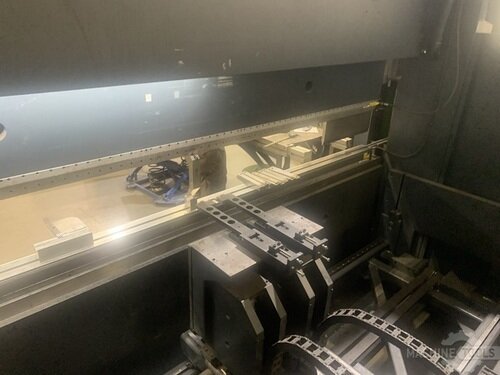When I walk into a fabrication shop, I see more than just machines and metal—I see opportunities to solve bottlenecks and help teams unlock their true production potential. Over the years as a Regional Sales Executive at Mac-Tech, I’ve worked side by side with fabricators who face real challenges: unexpected downtime, inconsistent quality, and the pressure to maximize every investment. My goal is always to provide hands-on advice and tailored solutions, whether that means recommending a laser system upgrade or configuring a press brake for next-level efficiency.
Understanding Fabrication Bottlenecks: Insights From the Shop Floor
Every fabrication shop is unique, but many share the same pain points when it comes to bottlenecks. Often, these issues become apparent during peak production periods—when deadlines are tight and equipment is pushed to its limits. I’ve seen firsthand how a single misconfigured press brake or an underpowered laser can bring an entire line to a standstill. The key to eliminating downtime is identifying where the slowdowns occur, whether that’s in material handling, setup times, or machine changeovers.
Successful shops take a proactive approach. They gather data from their shop floor, track cycle times, and monitor machine utilization. By working with Mac-Tech, fabricators gain access to deep technical knowledge and real-world benchmarking data. This helps them make informed decisions about where to invest and how to configure their equipment for uninterrupted production.
Choosing the Right Laser System for Precision and Productivity
Laser cutting systems are the backbone of modern fabrication, and selecting the right one is critical for both precision and throughput. The choice between fiber and CO2 lasers, for example, comes down to the types of materials you process and the tolerances you require. Fiber lasers offer unparalleled speed and lower operating costs for thin metals, while CO2 lasers remain a go-to for thicker, non-metallic materials.
But machine selection is only the beginning. I always emphasize the importance of integration—with automated loading and unloading, advanced nesting software, and remote diagnostics, shops can keep their lasers running with minimal interruption. This holistic approach ensures maximum uptime and consistent cut quality, both of which are essential for meeting tight delivery schedules.
Press Brake Configuration: Maximizing Efficiency and Flexibility
A well-configured press brake can be a game changer. It’s not just about tonnage or bed length—today’s machines offer a range of options, from automatic tool changers to advanced CNC controls, that dramatically reduce setup time and human error. I’ve helped clients reconfigure their press brakes to allow for quick job changeovers, adaptive bending, and real-time angle correction. The result: fewer rejects, less rework, and a smoother workflow.
Flexibility is equally important. Shops that handle a mix of short runs and high-volume jobs need press brakes that can adapt on the fly. Modular tooling systems, programmable backgauges, and offline programming all play a role in keeping production moving. By matching machine features to your specific application, you can eliminate bottlenecks and keep your workforce focused on value-added tasks rather than troubleshooting equipment.
ERMAKSAN POWER-BEND FALCON BENDING MACHING
ERMAKSAN SPEED BEND PRO
Tooling Strategies That Drive Consistent Performance
Tooling is often overlooked, but it’s a critical factor in minimizing downtime. The right tooling setup not only improves part accuracy but also extends the life of your press brake and reduces wear on critical components. I advise customers to invest in precision-ground tooling and quick-change systems. These solutions dramatically cut setup times and make it easier to switch between jobs without sacrificing quality.
Standardizing tooling across machines and operators is another strategy that pays dividends. It simplifies training, reduces the risk of errors, and ensures that every part meets your quality standards. At Mac-Tech, we work with fabricators to audit their tooling inventory and recommend upgrades that align with their production goals and budget.
Calculating ROI: Real-World Metrics for Smarter Equipment Investments
When it comes to capital equipment, every investment should be justified with clear ROI metrics. I encourage clients to look beyond the sticker price and consider factors like reduced setup times, lower scrap rates, and increased throughput. For example, upgrading to a press brake with automatic tool changers can cut job changeover time by up to 80 percent, directly translating into more billable hours and faster order fulfillment.
Real-world data is essential. Tracking machine utilization, maintenance costs, and production output before and after an upgrade gives you a clear picture of your return. At Mac-Tech, we help fabricators build detailed ROI models so they can make confident decisions. The right configuration pays for itself quickly—often sooner than you might expect—while setting the stage for long-term growth and competitive advantage.
Frequently Asked Questions
What features should I prioritize when selecting a new press brake?
Focus on flexibility, automation options, and ease of programming to reduce setup times and improve accuracy.
How can I minimize downtime during machine changeovers?
Invest in quick-change tooling and CNC controls that allow for rapid, error-free transitions between jobs.
Is fiber laser technology always the best choice?
Fiber lasers excel with thin metals and high-speed production, but CO2 lasers may be better for thicker or non-metallic materials.
How do I calculate the true ROI of a machine upgrade?
Track all costs and benefits, including reduced labor, increased throughput, and lower maintenance expenses, to build a complete ROI model.
Will automation require extensive operator retraining?
Modern systems feature intuitive interfaces and often require minimal retraining, especially with support from your equipment partner.
Can Mac-Tech help with equipment installation and ongoing support?
Yes, we provide full installation, training, and ongoing service to ensure your equipment performs at its best.
Get Weekly Mac-Tech News & Updates








